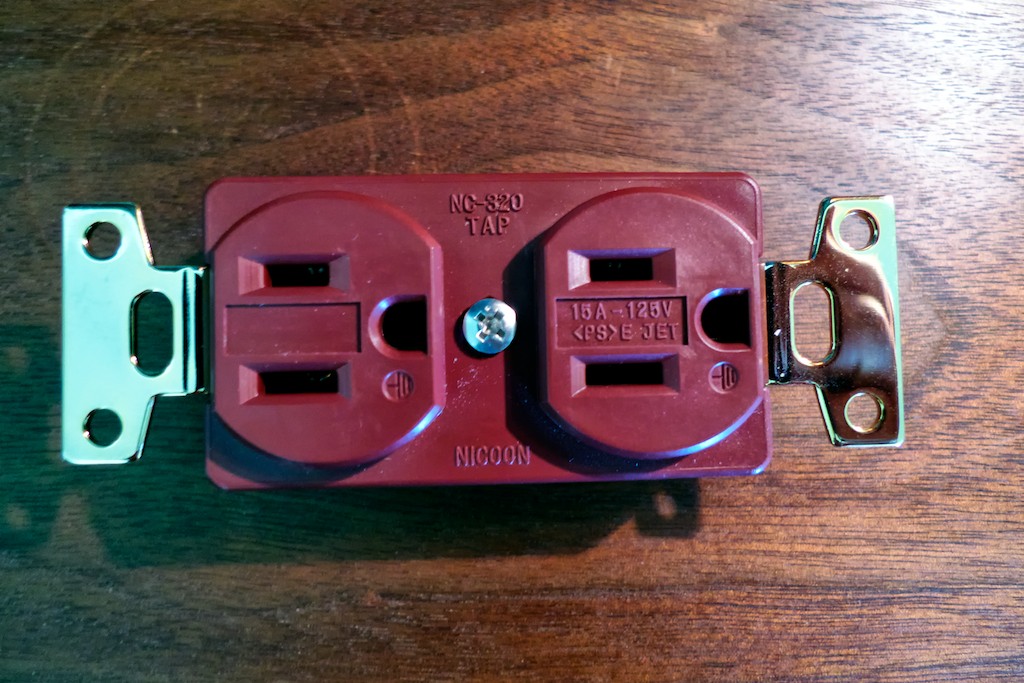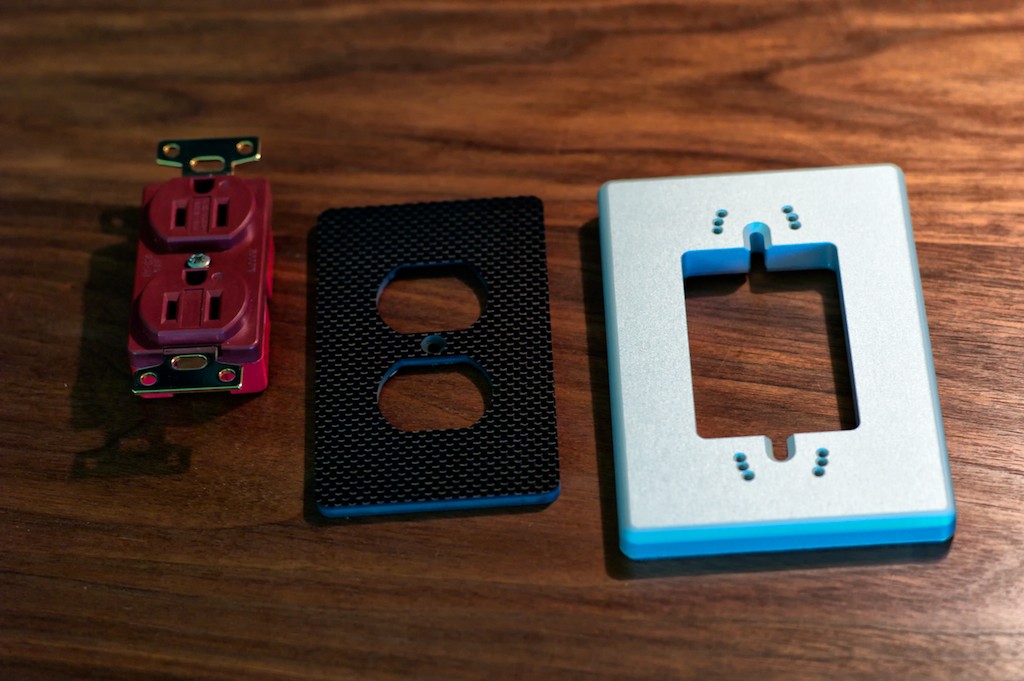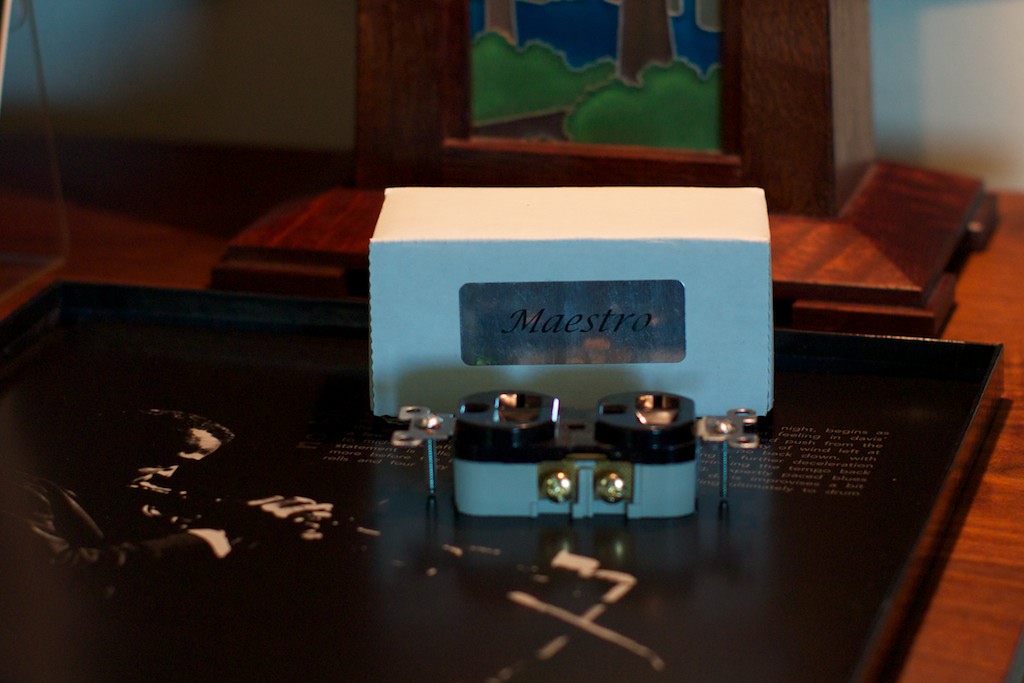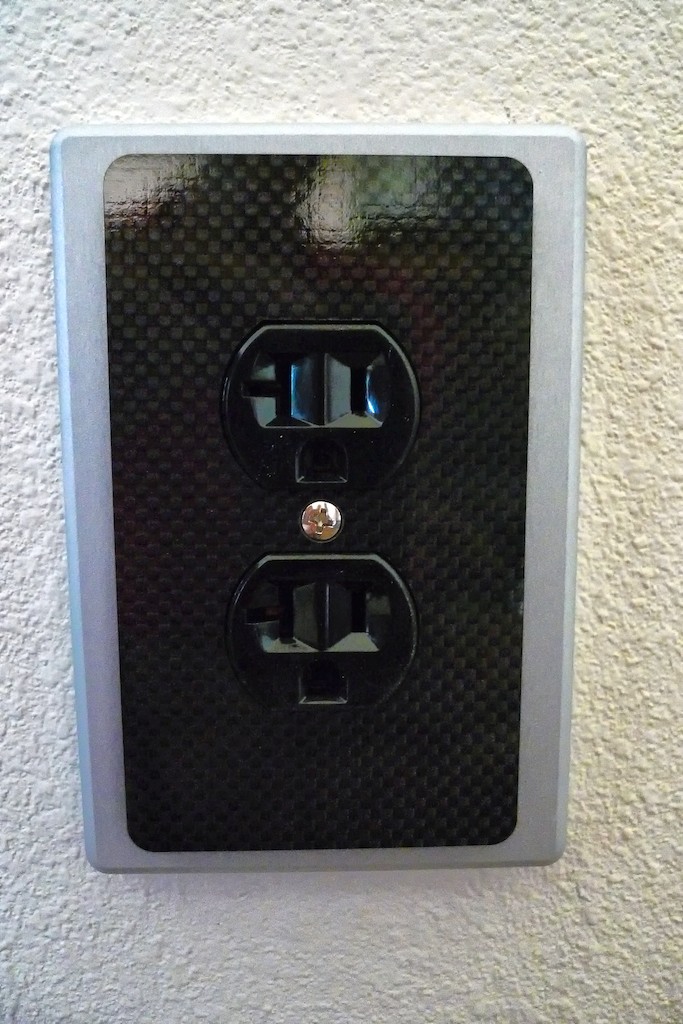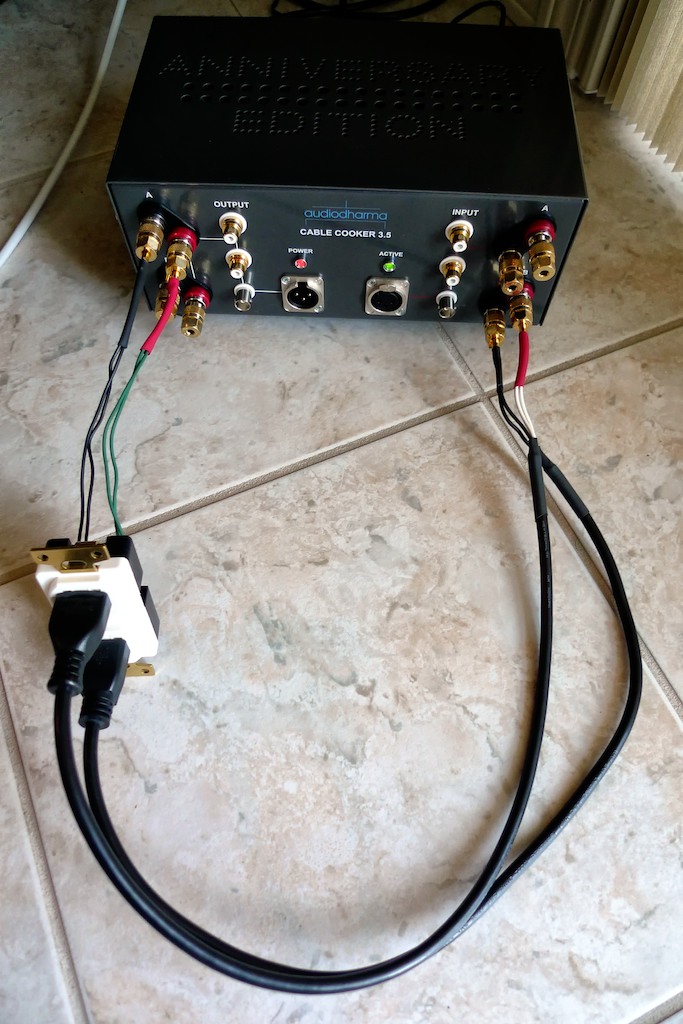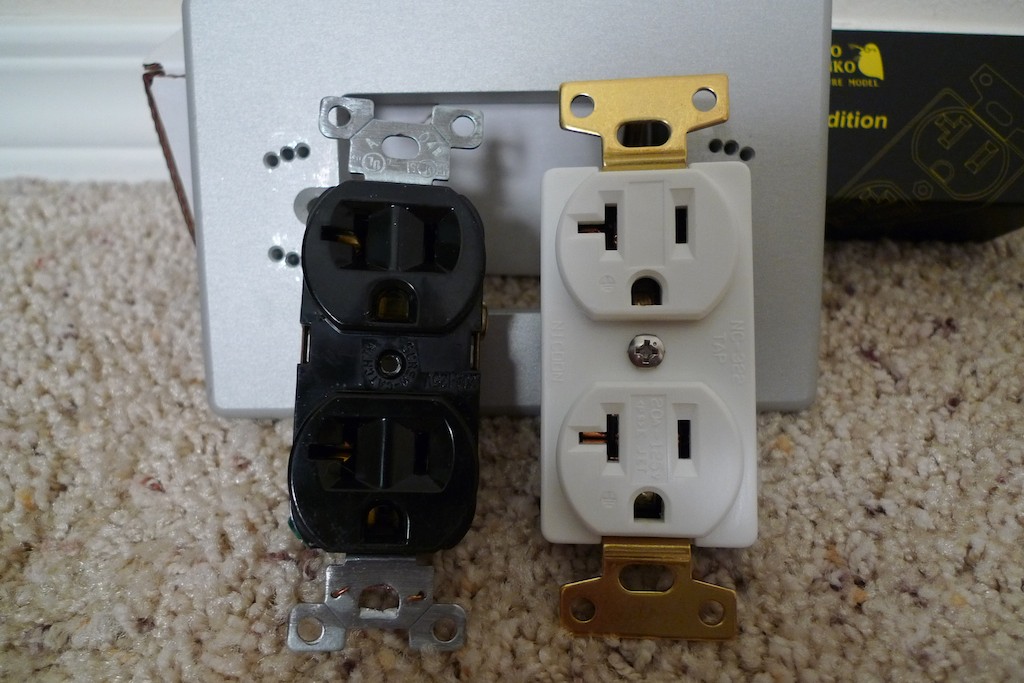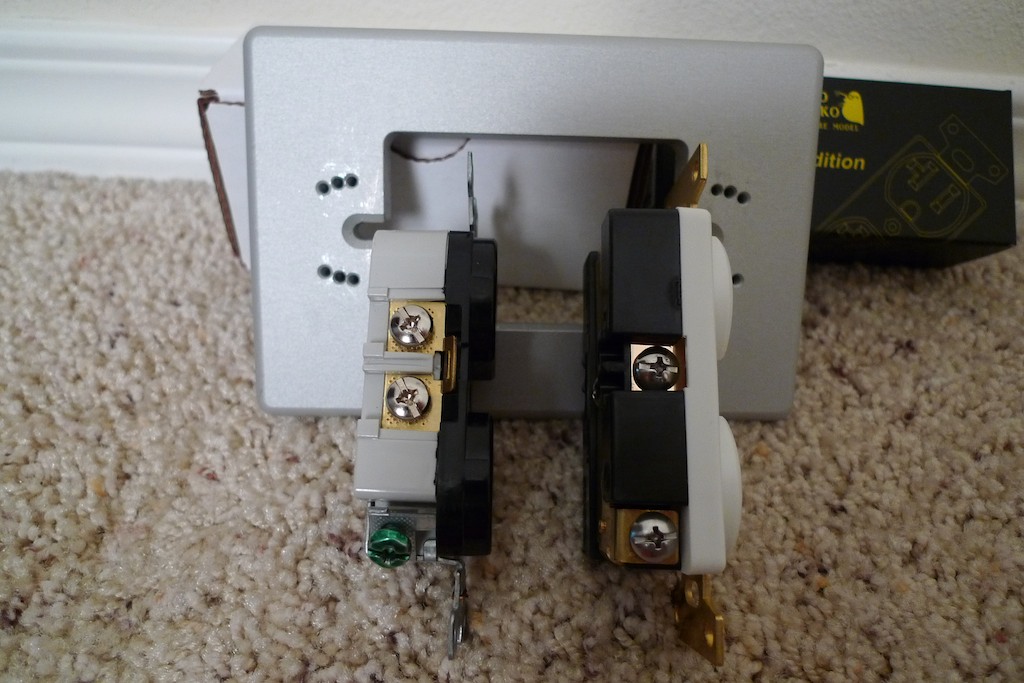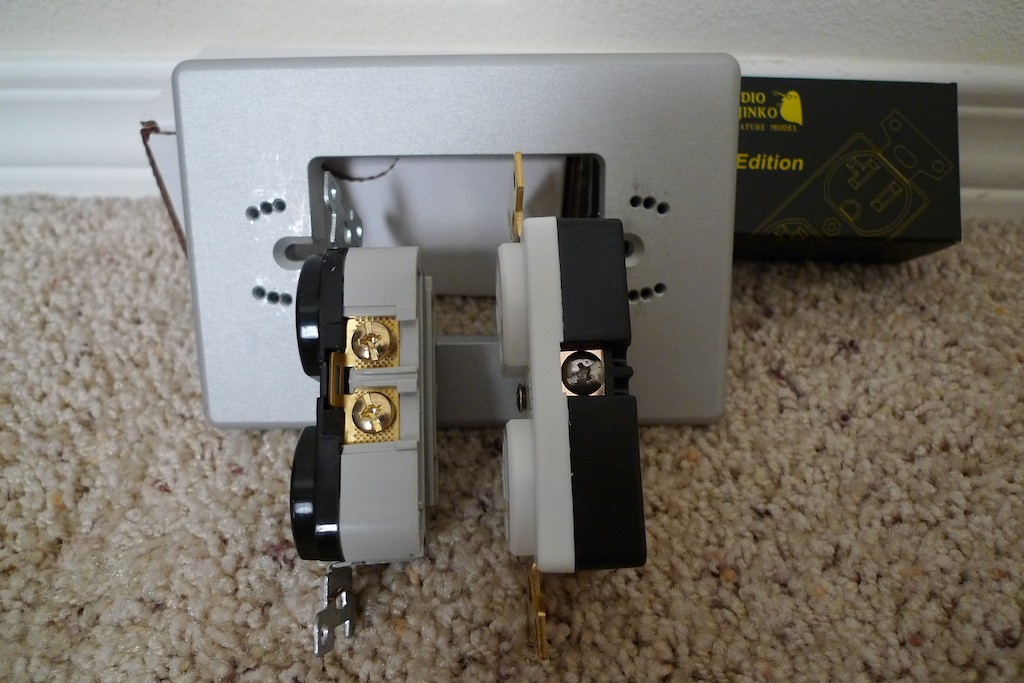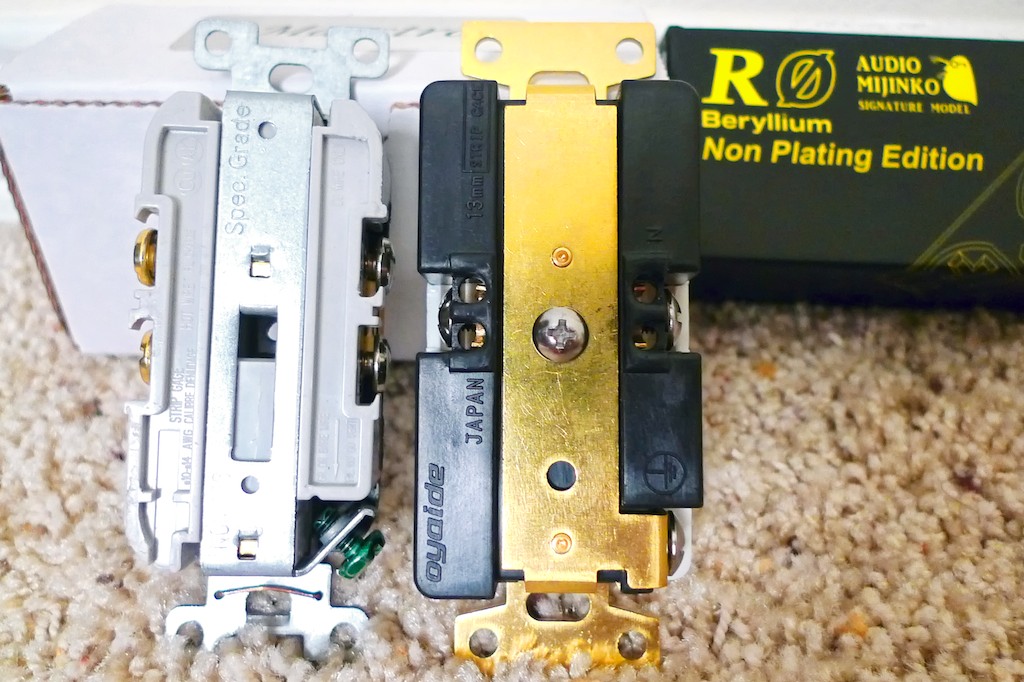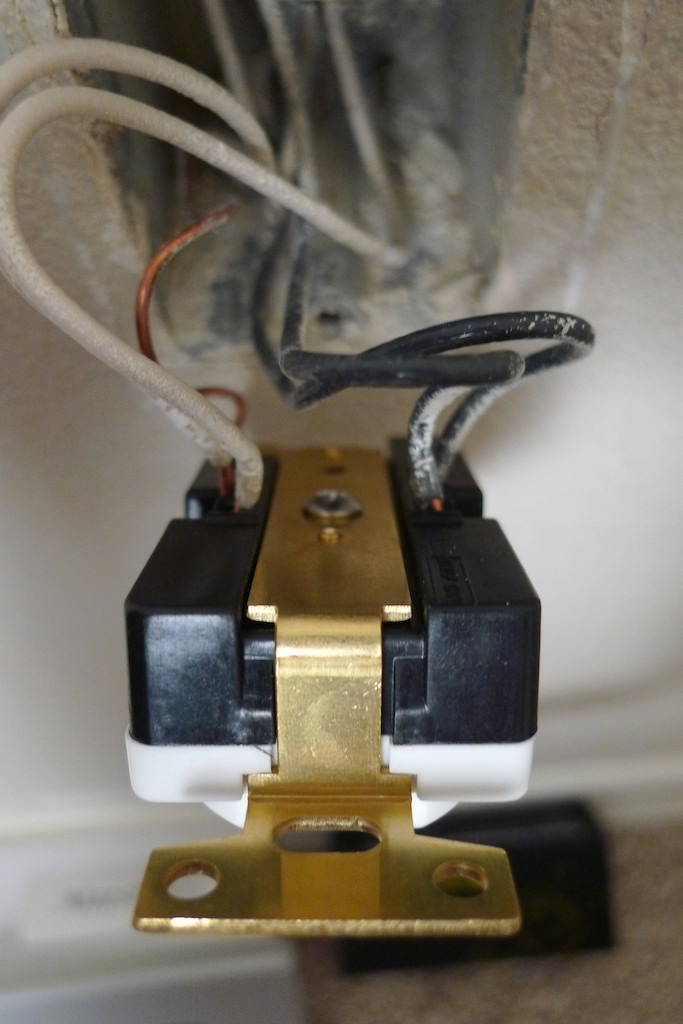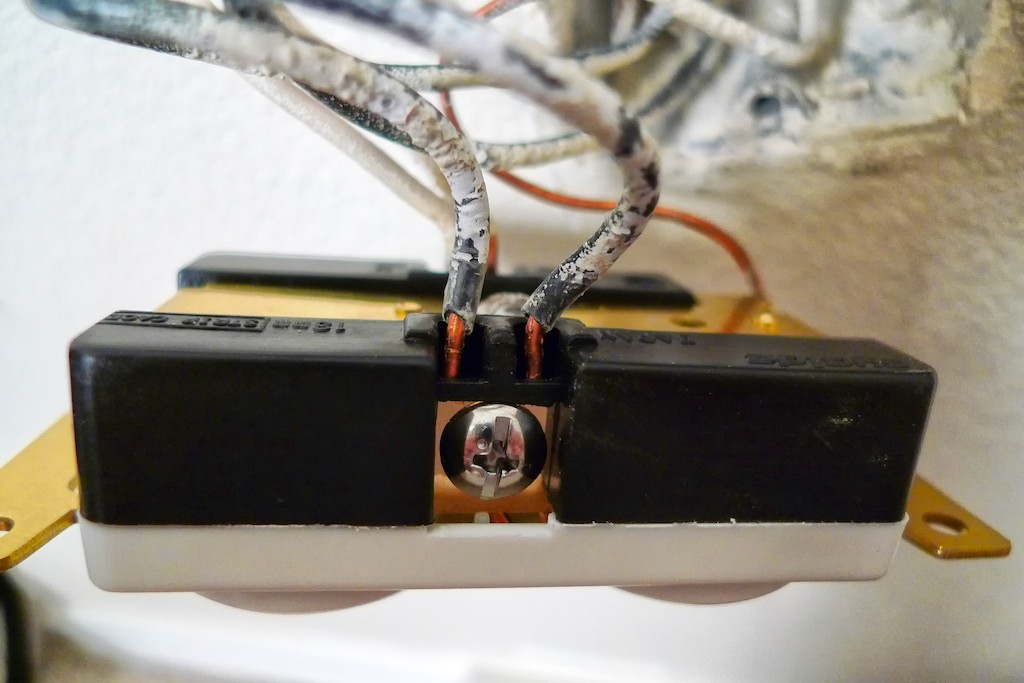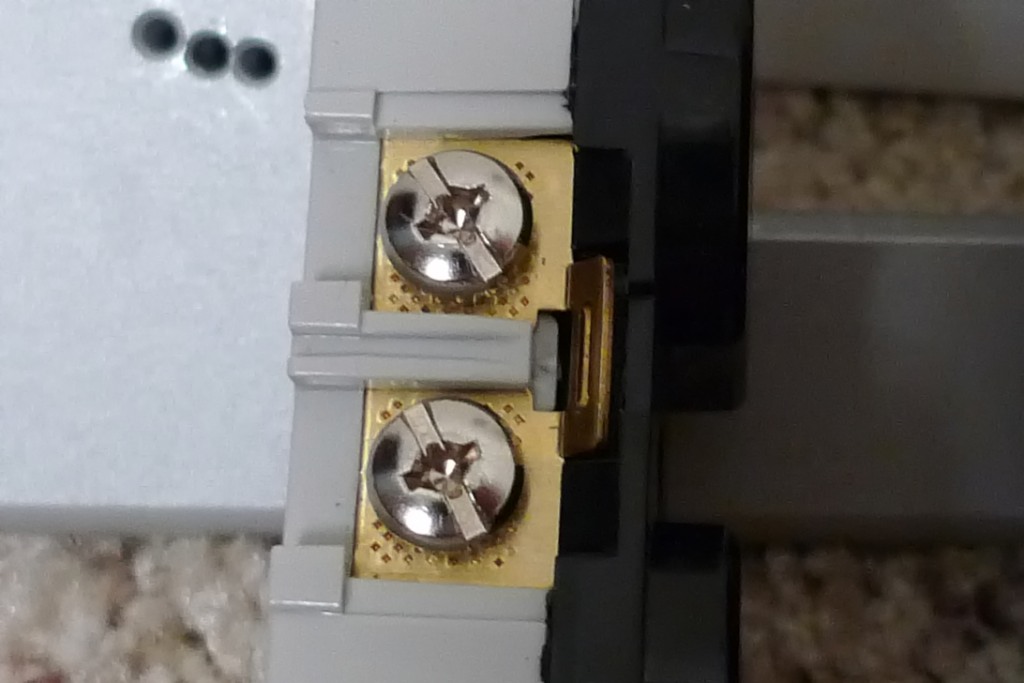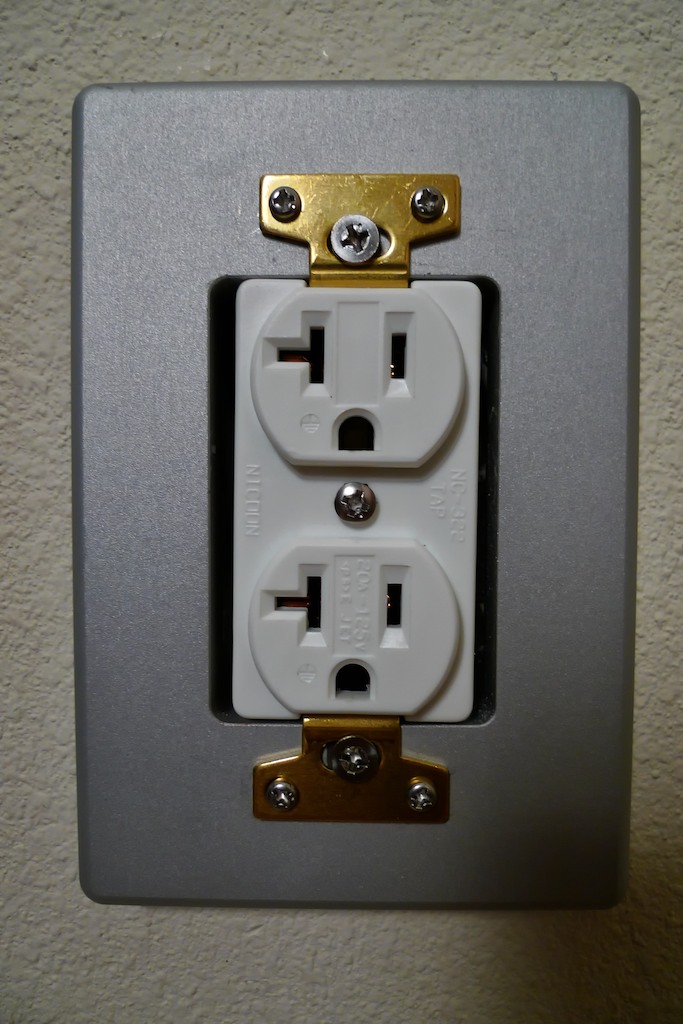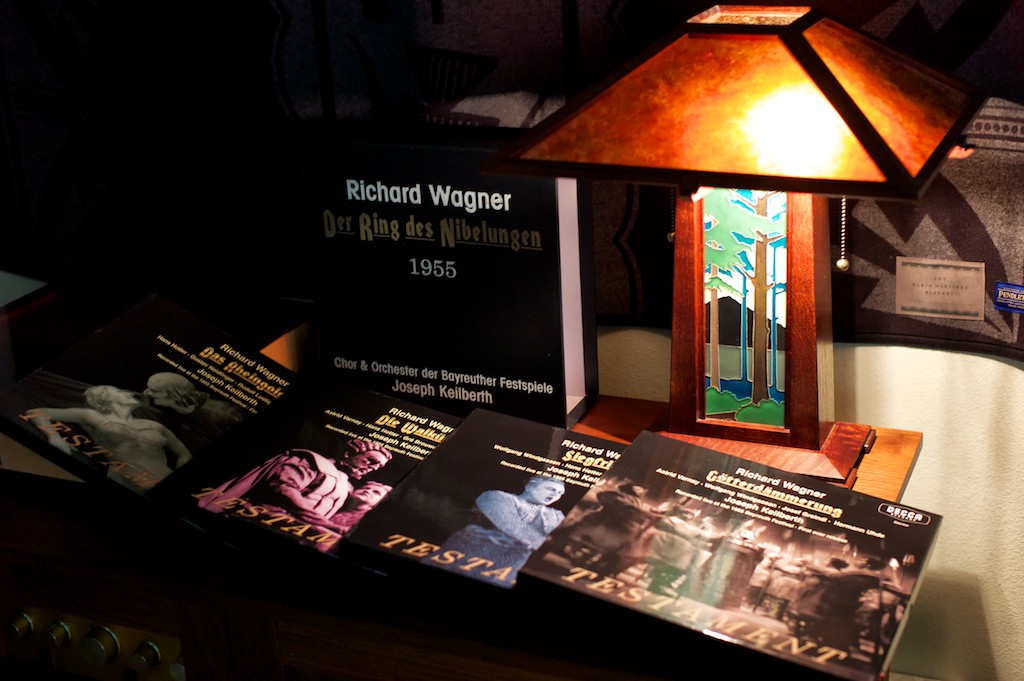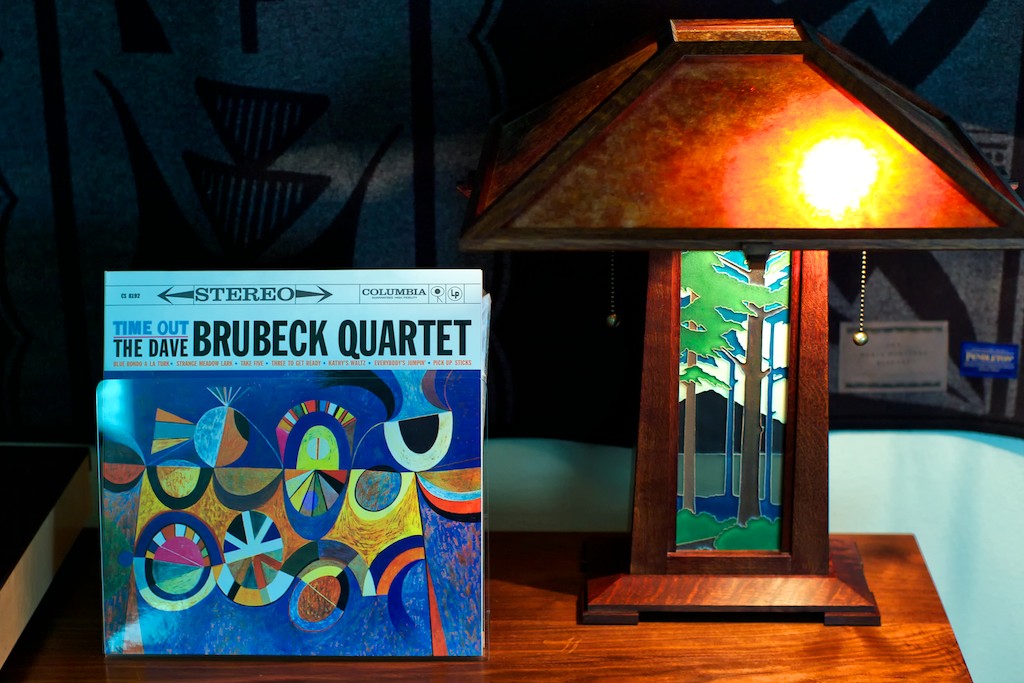As I've posted a couple of times recently (1, 2, 3), that while I was writing the Acoustic Revive Chronicles Chapter 10 article for Positive Feedback Online, I was very pleasantly surprised by what a tremendous performance enhancement - both musically & sonically - the Acoustic Revive modified Oyaide R-1 AC receptacles (below) were in my reference system.
Ken San & Yoshi San sent me the modified R-1s to try because they really show off the performance potential that is possible using the combination of the Acoustic Revive CB-1DB receptacle base plate (right) and the CFRP-1F carbon fiber outlet plate (center).
That experience showed me how important high-quality AC receptacles are to the ultimate performance of my reference system, but there was also a down side, because the Acoustic Revive modified R-1 receptacles are not available for purchase separately from Acoustic Revive, as they are only available as part of their RPT Ultimate Power Distributors.
I wanted to be able to recommend a high-performance AC receptacle to my audio pals, so I started to look into some other options. Mark Coles (Sablon Audio) told me that two of the most highly regarded high-performance AC receptacles in the audio underground were the Oyaide R-0 ($147 USD each), which is an unplated version of the R-1 (photo above), and the Maestro ($85 USD each, photo below), which was developed by Fernando Cruz at cruzeFIRST Audio.
Joe Cohen (The Lotus Group) and Fernando Cruz (cruzeFIRST Audio) graciously sent a set each of the highly regarded Oyaide R-0 and Maestro AC receptacles for review. I’d like to say thanks both to Joe Cohen for sending a pair of Oyaide R-0s to use for comparison, and to Fernando Cruz for sending a pair of Maestros to use for comparison. Thanks guys!
In the few weeks after that review concluded, the Acoustic Revive modified Oyaide R-1 receptacles continued to break in and sound even better. Noticeably better: they really improved and got smoother, silkier, more resolving, and altogether more musical. So I decided I would first condition all of the AC receptacles for five days on the Audiodharma Cable Cooker so I could hear them at their best.
Last time I reported that I had installed the Maestro AC receptacles (above) into my wall outlets and I have been using them since then. I have had mixed results with the Maestro receptacles, which I will describe in a moment.
The Oyaide R-0 outlets are done with their conditioning cycle (above) so it was now time to pull out the Maestros, and install the Oyaide R-0s into my outlets and give them a listen for a while too.
Below is a front view of the Maestro (left) and the Oyaide R-0 (right).
Below are side views of the Maestro (left) and Oyaide R-0 (right).
Below is a back view of the Maestro (left) and the Oyaide R-0 (right).
The higher quality of construction of the Oyaide R-0 compared to the Maestro is immediately obvious, and it should be at nearly twice the price. The Oyaide R-0 has a thick brass backstrap (see photo below), and the Maestro a generic thinner stamped metal backstrap.
The Oyaide R-0's glass filled nylon body feels much more substantial compared to the Maestro's lightweight plastic body, and the R-0 seems more non-resonant. It is pretty clear the Oyaide R-0 is built to a much higher standard of quality than the Maestro. To be fair, the Maestro is built up from a production AC receptacle, and its high-performance internals are hidden away out of view.
The Oyaide R-0's clamping mechanism that holds the AC wires in place is superior to the Maestro's. In the R-0 there is an internal clamp that holds the wires firmly in place when you tighten down the screws, and you can't get the wires to loosen even when twisting the body around while mounting it into the wall outlet.
With the Maestro the clamping screw just presses the AC wires down against a copper plate (below). I had problems with getting the Maestro to hold the wires in place tightly enough regardless of how hard I cranked down on the screws to tighten them, and I'm a reasonably strong guy.
Moving the Maestro around to fit it into the outlet box caused the wires to move around more in the receptacle than I was comfortable with, with the AC wires ultimately coming loose, and the Maestro's screws needing to be retightened. I was able to get the Maestro mounted into the outlet, but I was never completely comfortable with the grip it had on the wires.
The Oyaide R-0 mounting bracket holes aligned perfectly with the Acoustic Revive CB-1DB receptacle base plate (above), and then I installed the CFRP-1F carbon fiber outlet plate to finish it off (below).
After installing the second of the two combinations of the trio of the Oyaide R-0 receptacle, the Acoustic Revive CB-1DB receptacle base plate, and the Acoustic Revive CFRP-1F carbon fiber outlet plate that provide AC power to my system, I restored the AC power at the breaker box and let my system warm up for a little listening session. I did notice too while plugging back in AC power cords that the Oyaide R-0 provided a stronger grip on the prongs than did the Maestro.
First up for a little listening was Götterdämmerung (Twilight of the Gods) from Der Ring des Nibelungen box set that I have enthused about here on Jeff's Place. With the Maestros in the two outlets that power my Hi-Fi the sound of Götterdämmerung was uncolored, neutral, clean, and clear, but not particularly musical, and the vocals on Side 5 sounded harsher and more piercing than I’m used to hearing them, and it didn't make for a particularly enjoyable listening experience.
With the Oyaide R-0s in place in the system, the music of Götterdämmerung took on a more natural and tonally rich timbral presentation, with a smooth, colorful, and musical presentation that I found quite appealing.
Switching over to Dave Brubeck's Time Out I had similar results, with horns sounding much more natural and life-like through the Oyaide R-0s than they did through the Maestros. I don't think I need to go on in detail, just suffice it to say that the Maestro was pretty soundly outclassed by the Oyaide R-0 both musically & sonically, and certainly in the quality of construction.
But ... I don't want to dismiss the Maestro just yet, as it is clearly a high performance AC receptacle that easily outperforms a stock AC receptacle. I am told by people with ears that can hear that the Maestro can benefit significantly from more conditioning time on the Audiodharma Cable Cooker, so I'm going to give it another week and then try it again and see what happens.
The Oyaide R-0 with its impeccable quality of construction and substantial musical & sonic charms is one impressive AC receptacle. How will it compare to a further burned in Maestro or a conditioned Acoustic Revive modified R-1? Stay tuned and find out!
Thanks for stopping by!




